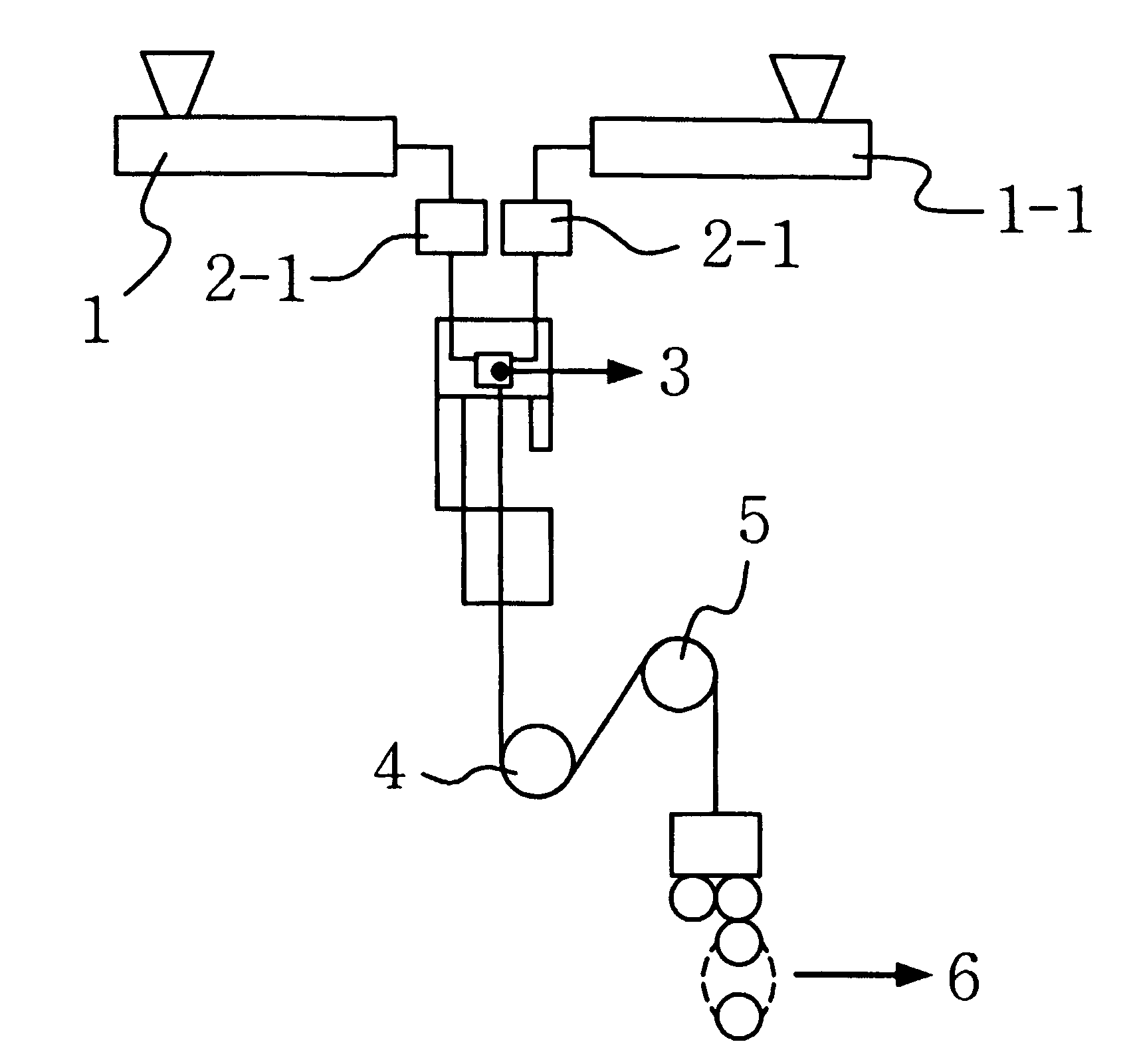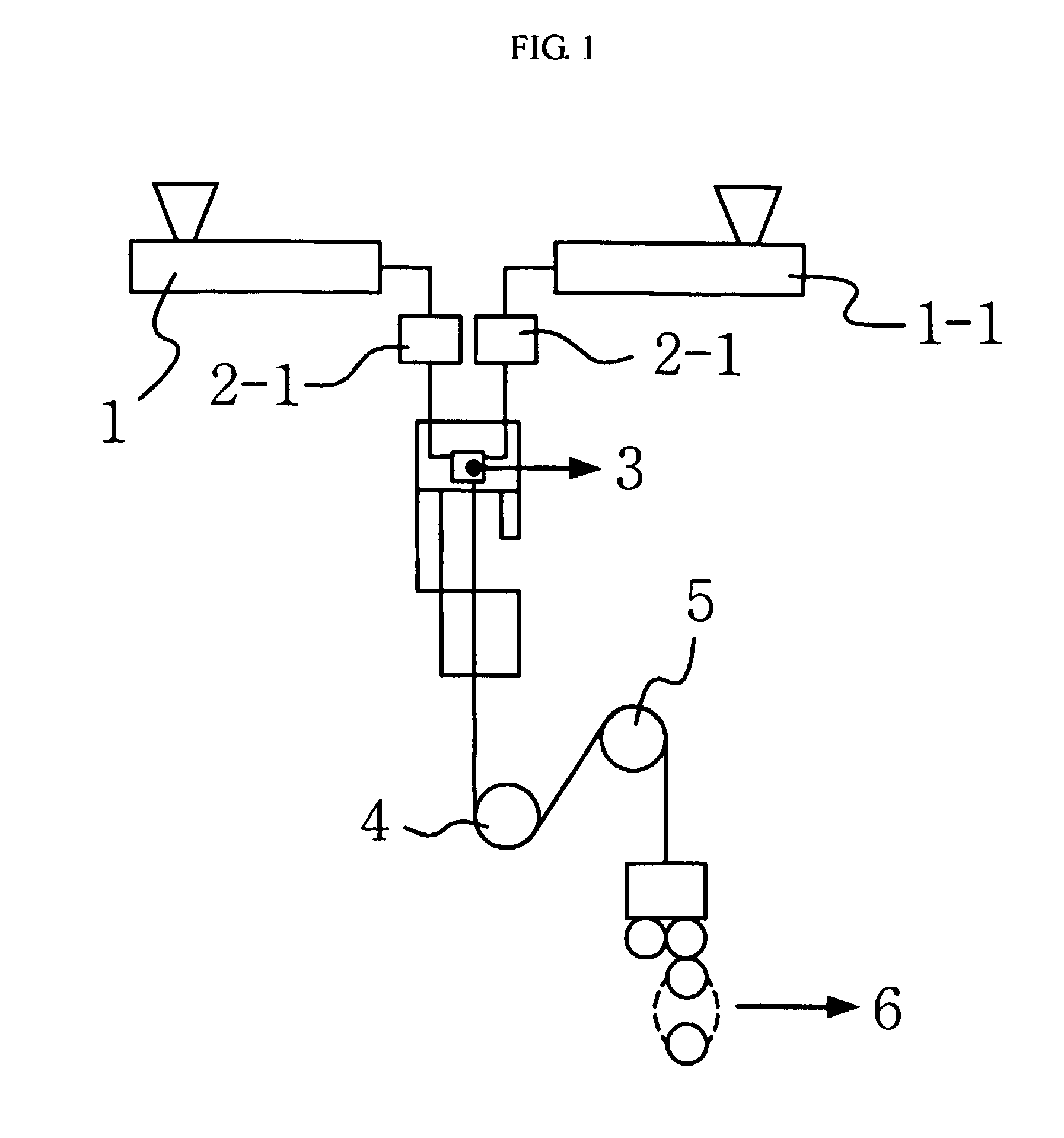Polyester Conjugated Yarn Having High Self-Crimping Properties and Method of Manufacturing the Same
a polymer and self-crimping technology, applied in the field of polymer conjugated yarns, can solve the problems of low spinnability, difficulty in mounting manufacturing equipment in a large scale, and inferior crimp properties of single spinning methods using quenching, and achieve superior spinnability and elasticity, good dyeability, and maximum difference of intrinsic viscosity
- Summary
- Abstract
- Description
- Claims
- Application Information
AI Technical Summary
Benefits of technology
Problems solved by technology
Method used
Image
Examples
examples 1-6
[0050] An inclined circular spinnerette was used for a side-by-side type bi-component spinning process of PET and PTT with a maximized difference of intrinsic viscosity. As a polymer A, PET having intrinsic viscosity of 0.460, 0.550 and 0.635 was used, and PTT having intrinsic viscosity of 1.00 was used as a polymer B, as shown in Table 1, below. Further, under spinning temperature conditions at 270-290° C. and different throughput ratios as in Table 1, below, a conjugated yarn was manufactured through a one-staged process by use of the inclined circular spinnerette. A cooling air of 23° C. at 5-120 cm directly under the nozzle was fed at 0.35 m / sec, and 0.5-1.1 wt % of a spinning oil was used. The resultant yarn was woven in warp and well directions to manufacture a woven fabric of 100 g / m2, which was then dyed at 120° C.
TABLE 1SpinningVisco.Ex.PolymerPolymerTemp.Differ.throughputInterfaceShapeNo.AB(° C.)(poise)RatioratioratioProcess1PET 0.635PTT 1.0029017005:50.201.03One-staged2...
PUM
| Property | Measurement | Unit |
|---|---|---|
| melt viscosity | aaaaa | aaaaa |
| elongation | aaaaa | aaaaa |
| melt viscosity | aaaaa | aaaaa |
Abstract
Description
Claims
Application Information
 Login to View More
Login to View More - R&D
- Intellectual Property
- Life Sciences
- Materials
- Tech Scout
- Unparalleled Data Quality
- Higher Quality Content
- 60% Fewer Hallucinations
Browse by: Latest US Patents, China's latest patents, Technical Efficacy Thesaurus, Application Domain, Technology Topic, Popular Technical Reports.
© 2025 PatSnap. All rights reserved.Legal|Privacy policy|Modern Slavery Act Transparency Statement|Sitemap|About US| Contact US: help@patsnap.com



